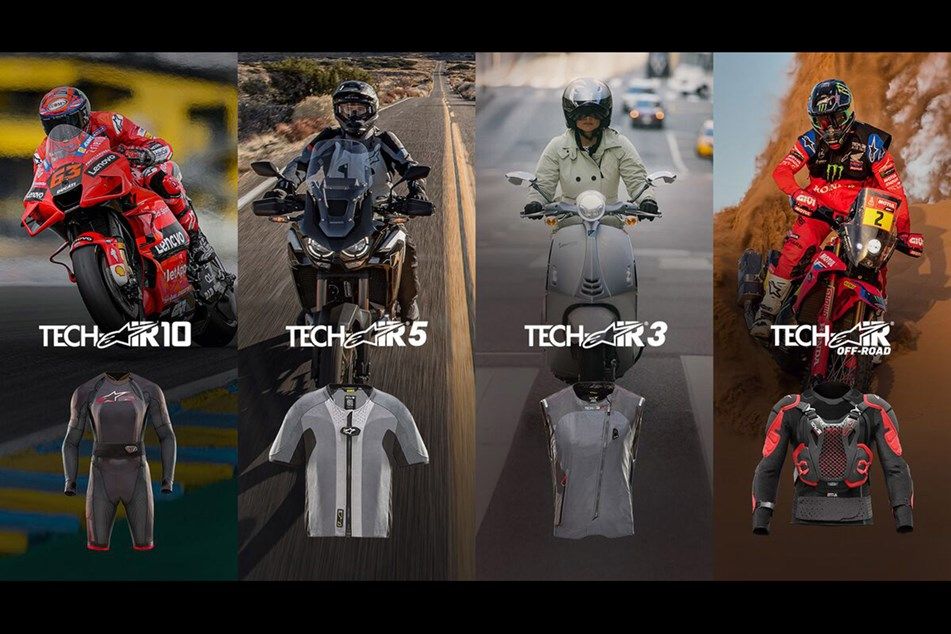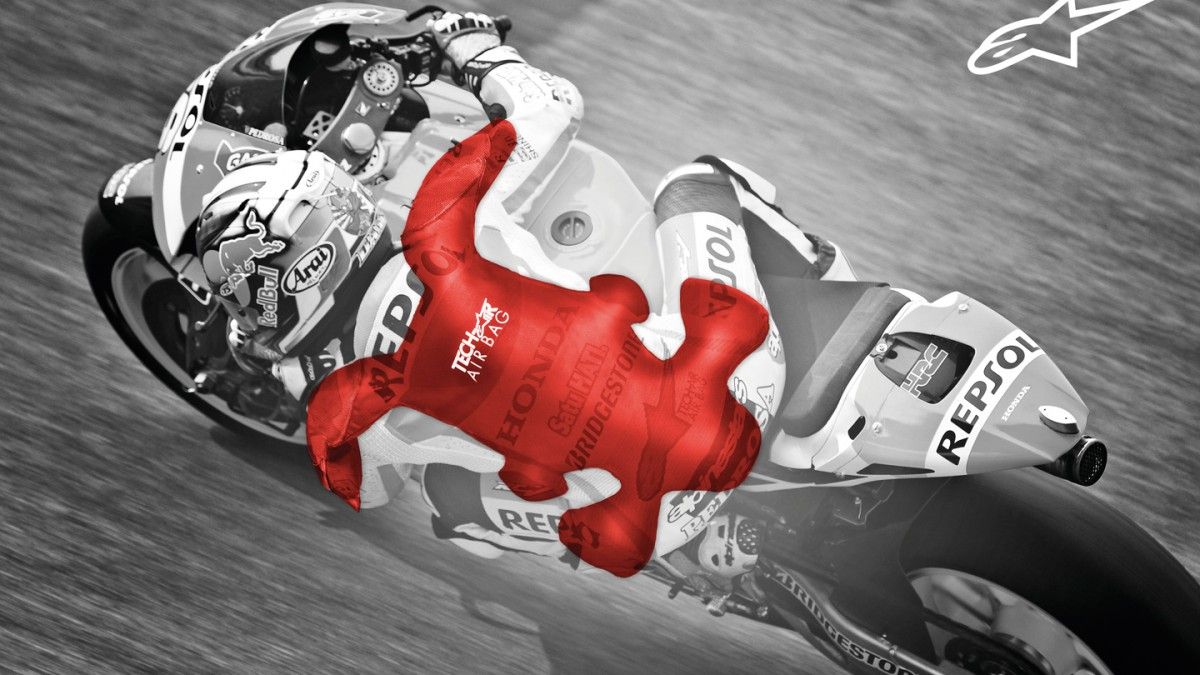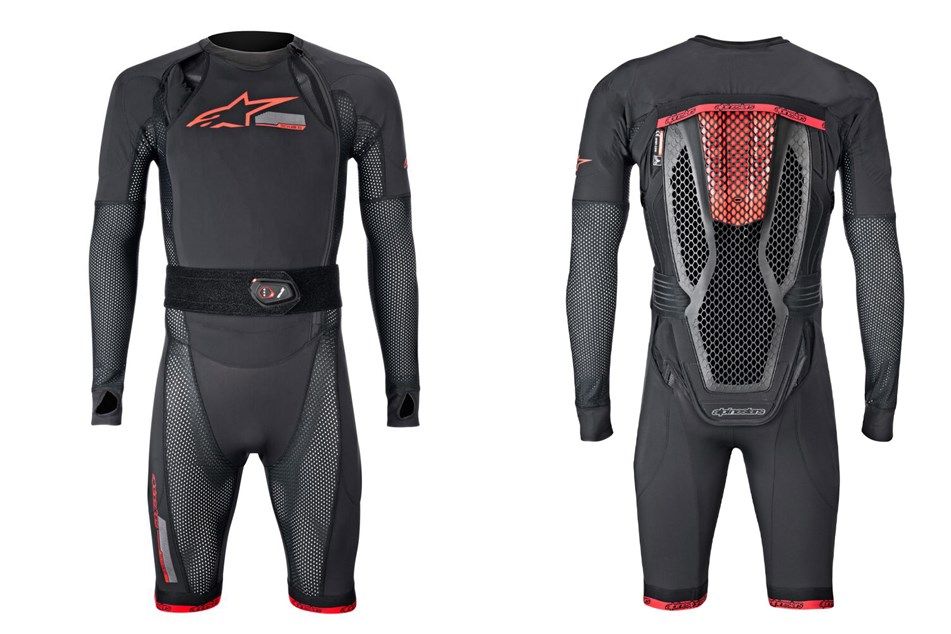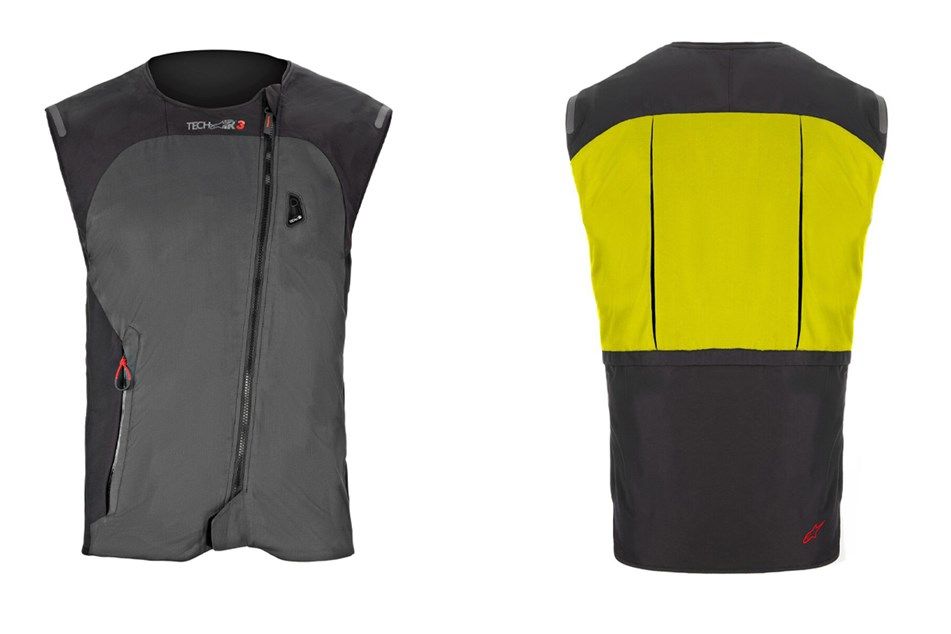Alpinestars has revealed its next-generation of rider wearable air bag technology, with a new entry-level vest.
Alpinestars Rider Air Bag Technology Trickles Down
The notion of trickle-down technology in motoring or motorcycling is nothing new. What often first appears on high-end or flagship models eventually finds its way onto less expensive and more mundane models as development of the technology enables components and manufacture to be cheaper and a smaller proportion of the overall cost of the bike, making it viable to fit as standard.
In this way, motorcycle safety has been infinitely enhanced by the fitment of ABS and traction control, to name but two technologies. Now, radar assisted cruise control is the new buzz-word and it is only a matter of years before we see it on scooters and commuter bikes.
Rider safety equipment has similarly improved out of all recognition, with even the cheapest jackets having CE-rated armour inserts, helmets having removable and washable padding as well as being much quieter and more comfortable and riding jeans having kevlar material sewn in for abrasion resistance.
Those are all very analog safety features but, in recent years, the rider airbag system has been introduced, perfected in the racing arena before being adopted for road use. They take the form of a vest that is worn under the rider's jacket and which contains sophisticated electronics that will trigger the airbag in the event of the rider coming off the bike.
Alpinestars has been at the forefront of developing rider airbag systems and, just as with all other technology, what was once very expensive, is starting to become more affordable. At the recent CES Las Vegas event, the Italian company revealed three new airbag vests - Tech-Air 10, Tech-Air 3 and Tech-Air Off Road V2 alongside the existing Tech-Air 5.
The Tech-Air 10 is the top of the range, featuring shoulder, chest, back and hip protection. It will fit under any Alpinestars airbag ready jacket or under any other manufacturer's jacket providing it has sufficient space between the jacket and the body for the airbag to inflate, generally 4cm at the chest and 2cm at the hips. Obviously, a figure-hugging jacket will not be suitable. This vest is aimed primarily at track riders wearing full leathers but could obviously be used by road riders.
At the other end of the scale, the Tech-Air 3 is a vest that is designed to fit over a jacket. Aimed at commuters and road riders, it is weather proof and lightweight and can be packed small to fit in a backpack or under the seat of a scooter when not being worn. Although no prices have been announced, the Tech-Air 3 has been described as an entry-level system which has to translate as 'affordable'!
The Tech-Air Off Road V2 has been updated using knowledge gained through events such as the Dakar Rally.
With airbags there are three main things to consider – it has to detect a crash, it has to protect in a crash, and it has to be worn.
The detection is done by an electronic brain, with sensors and a CPU making calculations 1000 of times per second. The protection is a result of inflated elements around the neck, down the spine and around the abdomen. Just as importantly, it has to be comfortable: it's no good making a crash safer if the fact of wearing it is so uncomfortable that it distracts the rider making a crash more likely to happen.
What are your thoughts? Would you consider wearing an airbag, if the price was right? Let us know in the comments section below.





